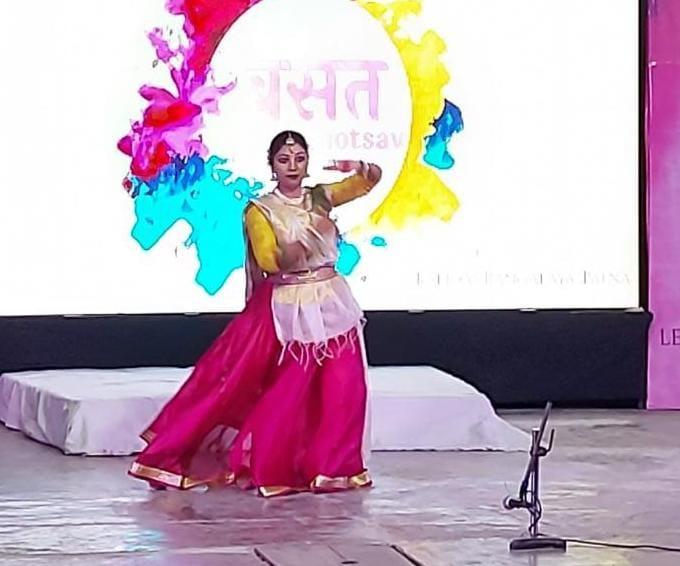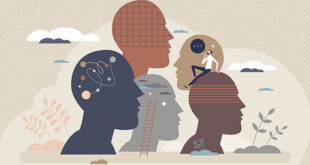People today turn to yoga, dance, and other physical activities in order to improve their physical wellbeing. Dance, as yoga, helps individuals control their body weight, improve their psychological condition, and reduce anxiety levels.
So, when we practicing Dance with Yoga Ethics or rather mixes dance and yoga then there will be realization in dance that the Dance of Natsamrat Shiva.
The dramatic scriptures of India were framed by Brahma at the request of the lesser gods, at the very beginning of the Treta Yuga, the last aeon before the present.
This event is described as follows in the first chapter of the “Natya Sastra” of Bharata:
When Brahma was a Sage in the Krta Age, and when Vasvata Manu was preparing for the Treta Age, when popular morality is in the grasp of greed and of desire, and the world is deluded by envy, by resentment, and by weal and woe, when the Devas, Danavas, Gandharvas, Yaksas, Raksasas, Mahoragas, and the Lokapālas entered upon Jambu-dvipa, then Indra and the other Devas said to Brahma:
“We desire a pastime to be seen and heard. This matter of the Four Vedas should not be heard by Sudras, pray therefore shape another and a fifth Veda for all the castes.”
Saying to them, “So let it be,” and turning away from Indra, he who knows the essence of every matter, seated in Yoga posture, called to his mind the Four Vedas, thinking,
“Let me make a Fifth Veda, to be called Naṭya (Drama), combined with epic story, tending to virtue, wealth, (pleasure and spiritual freedom), yielding fame—a concise instruction setting forth all the events of the world about to be, containing the significance of every Scripture, and forwarding every art.”
Thus, recalling all the Vedas, the Blessed Brahma framed the Naṭya Veda from the several parts of the Four Vedas, as desired. From the Ṛg Veda he drew forth the words, from the Sama Veda the singing, from the Yajur Veda gesture, and from the Atharva Veda the flavour (Rasa).
This science was communicated by Brahma to Bharata and to his hundred sons, and it was first used at the Flag Festival of Indra, to celebrate the victory of the Devas in battle against the Danavas. When, however, the Danavas found that the drama depicted their own defeat, they remonstrated with Brahma, and this afforded occasion for an explanation of the true character and significance of dramatic art—not to flatter any party, but to represent the true and essential nature of the world.
By the way, it has been said “योग कर्मसु कौशलम” “(Yoga Karmasu Kaushalam)” Yoga is the only way to do the work efficiently. That is, yoga provides understanding in reading the chapter of life and living easily. Similarly, dance is a cultural act in which ‘Yoga’ can be used to create joy in the form of art in life. At present, the more we are getting away from our culture, the more we are getting away from our language, behavior, speech, knowledge, health, good deeds, etc. Both yoga and art make us aware and walk on the right path.
Learning to dance with its elements through yoga can lead to wonderful harmony. In dance, the harmony of the body, the uniqueness of the intellect, the stability of the mind, yoga provides attainment soon. The purpose and goal of making this course of Dance-yoga or Yoga – dance is to establish the Sattva form of art in Trainees. So that they can also build a beautiful society by creating their own beautiful personality through this divine art.
In the early civilizational period of India, Indian tradition used to express emotions in a strong form through music, dance, architecture, painting, temple art. This inner power influences and balances the spiritual power. In this way, Indian art and traditional teachings of Indian religion reflect the inspirational Indian lifestyle. At the same time, while traditional art of the past is getting reflected, it also connects art with contemporary life. Gradually, due to the effect of time, dance and yoga have started reflecting in the form of different genres. Because lots of experiments are being included in dance. There is a way to understand and apply the process of dance and yoga. But this is not the subject of critical and analytical study. Possibilities are created practically, but it is not in the written and scriptures. Thus there is a huge gap between the theoretical understanding of dance and practical application.
In the nineteenth century and early twentieth century, historians, estheticians, philosophers started looking at Indian art from a different perspective. He started looking at dance and yoga with a fresh mind. There is a lack of holistic approach in dance and yoga due to lack of mantras and its functional or practical use.
Using dance and yoga according to the scriptures will give positive results. Along with this, meaningful use of art can be made experimentally. The dimensions of yoga give stability and precision to the dance. At the same time, the rhythmic dance is capable of expanding energy in yoga action. In the present context, the utility of dance can be fulfilled only by the influence of yoga. While the scriptures should be used without interference. It is essential to follow the same rules of the scriptures for experiment. Otherwise the side effects of yoga and degenerate forms of dance will start evolving.
–
Ms Yamini
Kathak Dancer & Assistant Professor,
Department of Education
Patna Women’s College. Patna
 Business Sandesh Indian Newspaper | Articles | Opinion Pieces | Research Studies | Findings & News | Sandesh News
Business Sandesh Indian Newspaper | Articles | Opinion Pieces | Research Studies | Findings & News | Sandesh News



